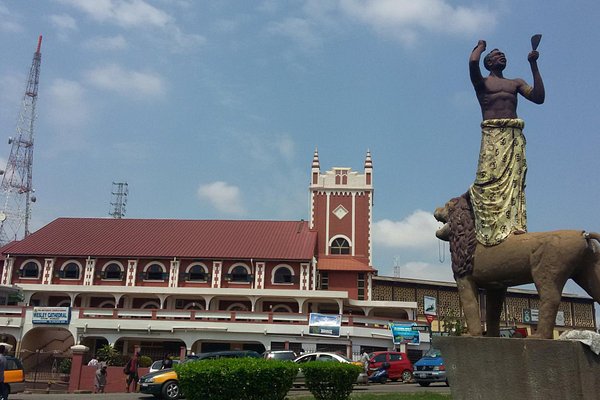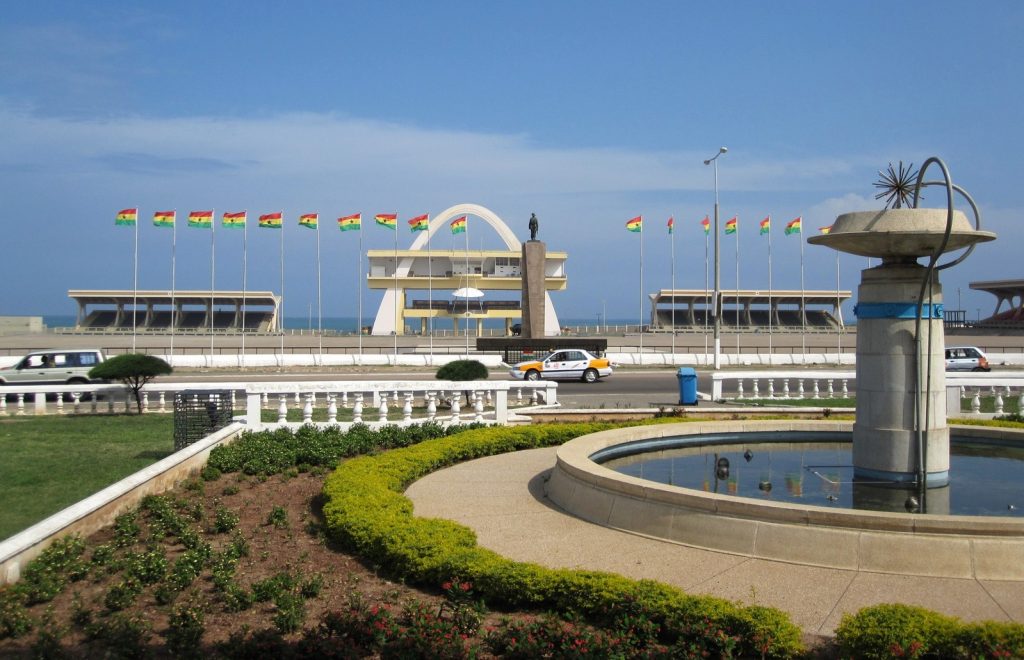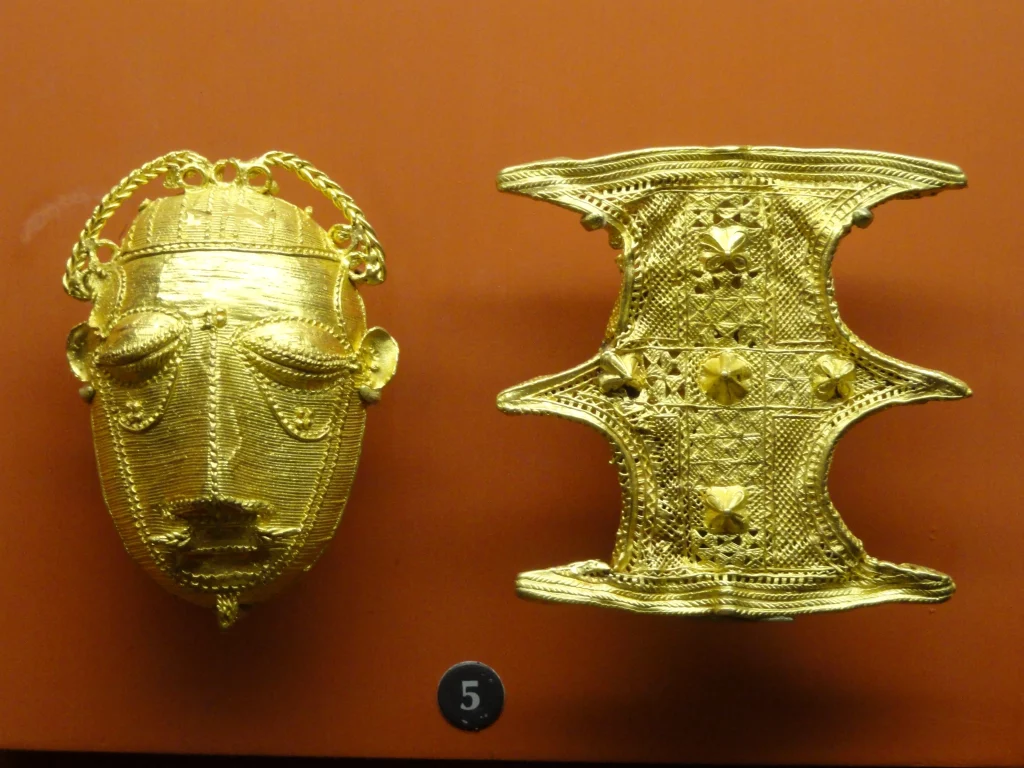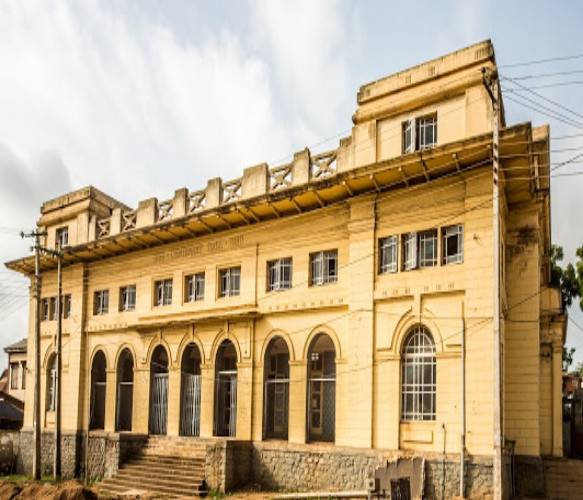Discover Ghana: 10 Must-Visit Places, Surprising Accra Facts, and Ashanti Kingdom Exploration
Kumasi, the bustling and culturally rich city in Ghana, is known for its historical significance, vibrant traditions, and lively atmosphere. Here are 10 amazing facts about Kumasi:
- Historical Heartland:
- Kumasi is the capital city of the Ashanti Region and served as the historic capital of the Ashanti Empire. It played a central role in the empire’s military, political, and economic activities.
- The Golden Stool:
- The Golden Stool, a sacred symbol of the Ashanti people, is believed to embody the unity of the Ashanti nation. It is kept in Kumasi at the Manhyia Palace and plays a crucial role in the enthronement of Ashanti kings.

- Manhyia Palace:
- The Manhyia Palace is the official residence of the Ashanti king, known as the Asantehene. Visitors can explore the palace and learn about the rich history and traditions of the Ashanti people.
- Kejetia Market:
- Kejetia Market is one of the largest outdoor markets in West Africa, offering a vibrant array of goods, including textiles, crafts, food, and traditional artifacts. It’s a bustling hub of commerce and culture.
- Cultural Center:
- The Kumasi Cultural Centre is a hub for promoting and preserving Ashanti culture. It features a museum, library, and various spaces for cultural events and performances.
- Adinkra Symbols:
- Kumasi is associated with Adinkra symbols, traditional symbols representing concepts or aphorisms. These symbols are often used in textiles and crafts and convey deep cultural meanings.
- Bonwire Kente Weaving Village:
- Bonwire, located near Kumasi, is renowned for its Kente weaving. Kente is a colorful and intricately woven fabric, and visitors can witness the traditional weaving process and purchase authentic Kente cloth.
- Okomfo Anokye Sword Site:
- Legend has it that Okomfo Anokye, a powerful priest, caused a sword to be buried in the ground at the site without using a metal blade. The sword remains firmly embedded, symbolizing the unity of the Ashanti people.

- Kumasi Zoo:
- The Kumasi Zoo is home to a variety of wildlife, including indigenous species. It provides a recreational space for families and visitors to learn about Ghana’s diverse fauna.
- Tech Hub:
- Kumasi is emerging as a technology hub in Ghana, with the Kwame Nkrumah University of Science and Technology (KNUST) contributing significantly to advancements in science and technology.
Kumasi’s blend of history, culture, and modernity makes it a captivating destination for those seeking a deeper understanding of Ghana’s heritage and traditions.
10 Amazing facts about Accra Ghana, I bet you did not know
Accra, the vibrant capital city of Ghana, is a captivating destination with a rich history, diverse culture, and dynamic energy. Here are 10 amazing facts about Accra:
- Historical Significance:
- Accra has a deep historical significance and was originally settled by the Ga people in the 14th century. It later became a center of trade during the colonial period.
- Independence Arch:
- The Independence Arch in Accra is an iconic monument that symbolizes Ghana’s struggle for independence. It was completed in 1961, marking Ghana’s liberation from British colonial rule.
- Jamestown:
- Jamestown, one of the oldest districts in Accra, is known for its colonial-era architecture, vibrant street art, and the historic Jamestown Lighthouse, offering panoramic views of the city.
- Makola Market:
- Makola Market is a bustling and colorful market in the heart of Accra, where locals and visitors can explore a variety of goods, from fresh produce to textiles and crafts.

- Osu Castle:
- Also known as Christiansborg Castle, Osu Castle has served various purposes throughout history, including being a seat of government and a presidential residence. It reflects the architectural heritage of Accra.
- W.E.B. Du Bois Center:
- The W.E.B. Du Bois Center is the final resting place of the renowned Pan-Africanist and civil rights activist W.E.B. Du Bois. The mausoleum and center house his personal library and other artifacts.
- Nkrumah Mausoleum:
- The Kwame Nkrumah Mausoleum is dedicated to Ghana’s first President, Kwame Nkrumah. It features a museum documenting his life and achievements, as well as a mausoleum where he is buried.
- Arts and Culture:
- Accra is a hub of arts and culture, with numerous galleries, theaters, and cultural centers. The city hosts events such as the Chale Wote Street Art Festival, showcasing contemporary art and performances.
- Labadi Beach:
- Labadi Beach, also known as La Pleasure Beach, is a popular recreational spot where locals and tourists alike can enjoy the sandy shores, vibrant atmosphere, and various beachside activities.
- Ghana’s Government Seat:
- Accra serves as the administrative and government seat of Ghana. Key government institutions, ministries, and embassies are located in the city.
Accra’s dynamic blend of history, culture, and modernity makes it a captivating destination for those eager to explore Ghana’s diverse heritage.
Ashanti Kingdom: History, Independence, Influence
The Asante Empire, commonly referred to as the Ashanti Empire, was a prominent Akan state that endured from 1701 to 1901, situated in what is now present-day Ghana. Its territorial influence extended from the Ashanti Region to encompass a significant portion of Ghana, along with segments of Ivory Coast and Togo. Renowned for its military prowess, opulence, distinctive architecture, intricate societal hierarchy, and vibrant culture, the Ashanti Empire has been extensively scrutinized and boasts a greater volume of historical documentation, primarily from European, particularly British, authors, compared to other indigenous cultures in sub-Saharan Africa.
In the late 17th century, King Osei Tutu (c. 1695 – 1717) and his adviser Okomfo Anokye laid the foundation for the Ashanti Kingdom, with the Golden Stool of Asante serving as a unifying symbol. Osei Tutu orchestrated a significant territorial expansion, fortifying the army through innovative organization and transforming a disciplined royal and paramilitary force into a formidable fighting unit. By 1701, the Ashanti forces conquered Denkyira, securing access to the Gulf of Guinea and engaging in coastal trade with Europeans, notably the Dutch. The economic foundation of the Ashanti Empire was predominantly rooted in gold trade, agricultural exports, slave trading, craftsmanship, and commerce with markets farther north.
Throughout its existence, the Ashanti Empire engaged in numerous conflicts with neighboring kingdoms and less organized groups, including the Fante. Notably, the Ashanti triumphed over the British Empire in the initial two of the four Anglo-Ashanti Wars. In 1824, during these wars, British General Sir Charles MacCarthy was defeated, and his skull was preserved as a gold-rimmed drinking cup. Subsequently, British forces razed and looted the Ashanti capital of Kumasi. Following the final Ashanti defeat in the fifth Anglo-Ashanti War, the empire became part of the Gold Coast colony on January 1, 1902.
Presently, the Ashanti Kingdom exists as a constitutionally protected sub-national traditional state in union with the Republic of Ghana. Otumfuo Osei Tutu II Asantehene currently serves as the king of the Ashanti Kingdom. Notably, the Ashanti Kingdom is home to Lake Bosumtwi, Ghana’s sole natural lake. The state’s primary sources of economic revenue include trading in gold bars, cocoa, kola nuts, and agriculture.
The Ashanti Kingdom, also known as the Ashanti Empire or Asanteman, has a rich history, played a significant role in Ghana’s struggle for independence, and continues to exert cultural and traditional influence today. Here is an overview:
History:
- The Ashanti Kingdom originated in the 17th century in the region that is present-day central Ghana. The Ashanti people, led by their first king, Osei Tutu, formed a powerful kingdom through military conquest and diplomatic alliances.
- The kingdom’s organization and governance were highly sophisticated, with a centralized political structure and a complex system of councils and officials.
- The Ashanti Kingdom became a dominant force in the region, controlling valuable trade routes and resources.

Contributions to Independence:
- During the colonial era, the Ashanti Kingdom played a crucial role in resisting British imperialism. In 1900, the Ashanti-British “War of the Golden Stool” (Yaa Asantewaa War) erupted, led by Queen Mother Yaa Asantewaa. The conflict aimed to preserve the Ashanti’s sacred Golden Stool and resist British attempts to subjugate the kingdom.
- Despite the Ashanti resistance, the British eventually annexed the kingdom into the Gold Coast colony. However, the spirit of resistance remained, contributing to the broader anti-colonial sentiment in Ghana.
Post-Independence Influence:
- After Ghana gained independence in 1957, the Ashanti Kingdom retained its cultural and traditional significance. The Asantehene, the king of the Ashanti, became a symbol of continuity and cultural preservation.
- The Asantehene, as a traditional leader, holds a symbolic position, contributing to the preservation of cultural heritage and fostering unity among the Ashanti people.
- The Ashanti Kingdom continues to have influence in contemporary Ghanaian society, especially in matters of cultural practices, rituals, and traditional governance.
Cultural Significance:
- The Ashanti Kingdom is renowned for its vibrant cultural practices, including the celebration of festivals such as the Ashanti Yam Festival (Hommowo) and the Odwira Festival.
- Traditional symbols, proverbs, and rituals play a significant role in Ashanti culture, contributing to a sense of identity and community among the Ashanti people.
Role in National Development:
- While Ghana operates as a constitutional democracy, traditional leaders, including the Asantehene, maintain a role in local governance and development.
- The Ashanti Kingdom, through its traditional leadership structure, contributes to community development initiatives, education, and healthcare within its jurisdiction.
Tourism and Heritage:
- The Ashanti region, with its historical sites, including the Manhyia Palace (official residence of the Asantehene) and the Prempeh II Jubilee Museum, attracts tourists interested in Ghana’s cultural heritage.
- The kingdom’s regalia, including the Golden Stool, holds immense cultural and historical value and is a symbol of the Ashanti’s resilience and identity.
The Ashanti Kingdom’s history, resistance against colonial rule, and cultural resilience have left an indelible mark on Ghana’s national narrative. Today, it stands as a living testament to the importance of preserving cultural heritage within the context of a modern, independent nation.
Related Reading Ghana’s Icons: Yaa Asantewaa, Dr. Aggrey, and Okomfo Anokye

